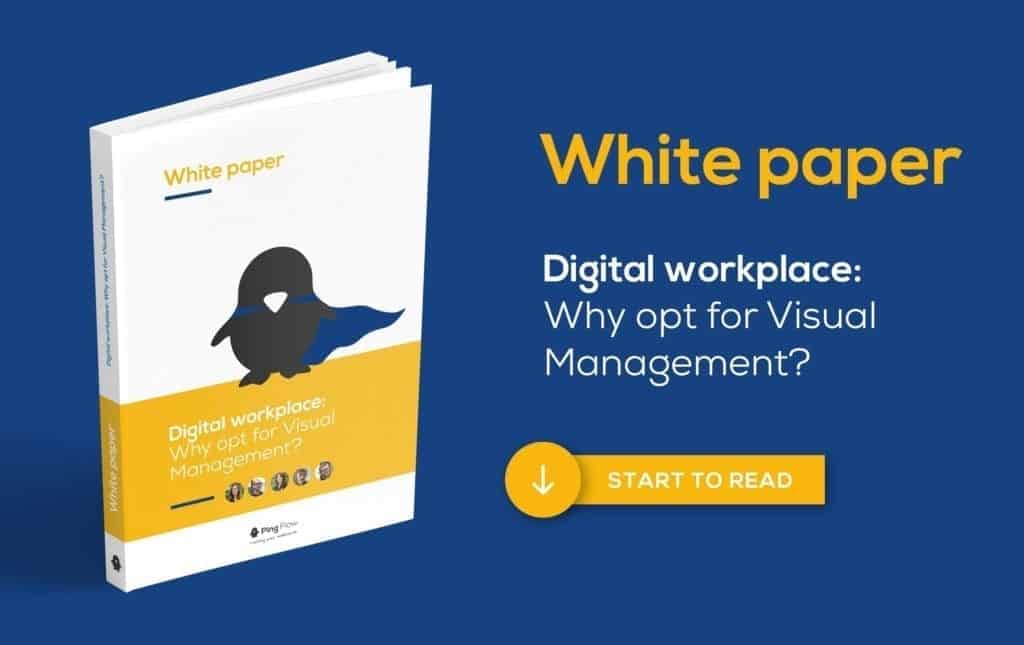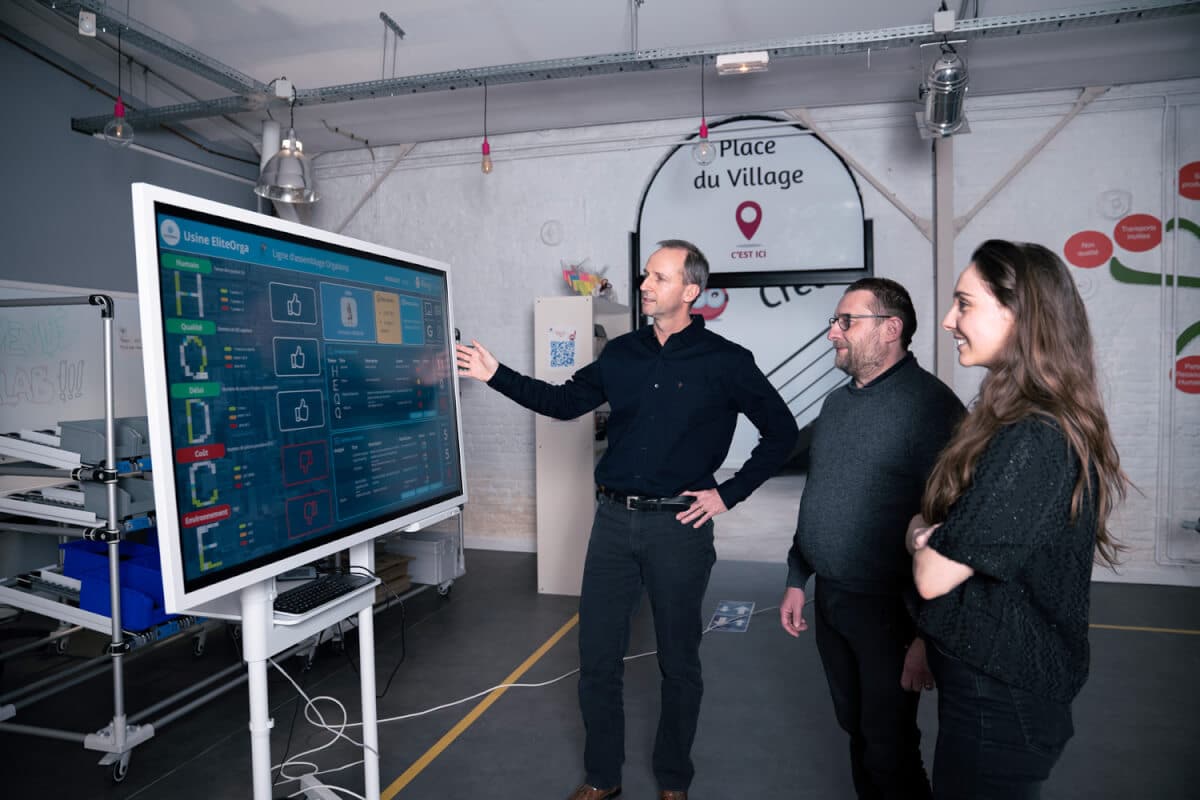Visual management is a key component of the digital workplace. Relevant for both operational management and the digital transformation, Visual Management is a real benefit for those companies or services which adopt it. However, implementation needs to establish several ground rules. Would you like to be the hero of your company’s digital workplace? Follow these 10 commandments.
#1 – Build the best team
Choose a member of the business team who is convinced of the benefits of Visual Management screens in the work environment. Work together with their manager who will have an overview of the department and can adapt the Visual Management tools to all team members. Finally, meet with an IT manager: The IT manager will have the technical skills to connect your solution to the information system, which will make it more efficient.
#2 – Make time
Digital transformation can be time-consuming. Just as with any new implementation, Visual Management requires time for teams to build it correctly. And it requires the involvement of the whole team: It will require several meetings to define the indicators and other information to share with the whole department. If you move forward too fast without clear objectives, you will spend time correcting your mistakes. Some people will need more time than others to adapt to the new environment.
#3 – Define the objectives
It is not just about displaying information. Visual management is based on operational indicators. They must therefore be useful for the whole team. It is essential to know the objective of displaying an indicator and if it concerns everyone.
#4 – Configure the data correctly
Draw a map of the data selected. Where is the data? Who updates it? How regularly? You must have all this information together before deciding to display data on the wallboard (or connected screen). The ideal scenario is to connect your Visual Management solution to your information system to automate, as much as possible, data collection for the indicators that will be displayed. It is the mark of a durable new organisation, since the motivation for manually updating screens and data will drop off quickly.
#5 – Do not overload the wallboard
It is not necessary to fill the wallboard with all the indicators or KPIs that you hold. We stated earlier: Focus on relevance. It is better to have five indicators monitored daily by all team members than 50 that no one reads. Privilege quality over quantity.
#6 – Be a manager
The term ‘management’ in Visual Management should never be overlooked. This is still a source of error in many companies. You should support and work with your teams to manage this change. Thanks to the wallboard, staff will be more able to take control of their daily activities. It is an opportunity for you to implement a more supportive, rather than top-down, management style.
#7 – Ensure that your screen is placed in a sensible place
Do not place your screen near the toilets where you will have made investments in time and money to no avail. You should think of a strategic location where staff will have regular access to the information at a glance. Also think about the reflection of sunlight on the screen which might make it difficult to read.
#8 – Avoid internal developments
It is true that internal developments are tempting. You hold the indicators, the data and are responsible for the staff. What could a development partner contribute? Their experience! The partner knows their industry and all about Visual Management. A partner will understand these 10 commandments, and will already have applied them in several companies: They can be wary of potential errors and help you to apply good practice immediately. And if your Visual Management becomes workload for the IT department (ISD), it is likely to flounder quickly.
#9 – Use the wallboard
Do not think of it simply as a display system but as a real tool for operational management. Use the connected screen in meetings and replace typical staff presentations. For the wallboard to help you attain operational excellence, the whole team must be involved in discussing the indicators produced and their change over time.
#10 – Challenge the current organisation






